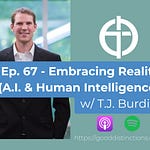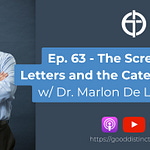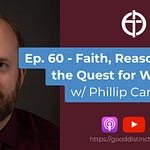NOTE: THIS EPISODE WAS PUBLISHED BEFORE OUR REBOOT. willwrightcatholic.com is now gooddistinctions.com
Nota bene: the quote above, though attributed to MLK, is not sourced to him. It is likely something said by those who came after him. But it, nonetheless, captures his approach.
Introduction
With Martin Luther King day approaching, it struck me that a great number of Americans have no idea who Martin Luther King Jr. was or what he did. They are barely familiar with his most famous speech: “I Have a Dream.” And each third Monday of January, most of us take the day off work for the federal holiday, but we do not take time to appreciate the contributions of this great man. So, in a small way, I would like to respond to that vacancy of attention. This short article will look at the life of Dr. King and his role in the Civil Rights Movement. There are many things that I have had to leave out for time’s sake. But may this serve as a primer for further study. I believe that we still have more to learn from Dr. Martin Luther King Jr.
Who was Dr. Martin Luther King Jr.?
Dr. Martin Luther King Jr. was born Michael King Jr. on January 15, 1929 in Atlanta, GA. He was an American Baptist minister and one of the foremost leaders of the Civil Rights Movement of the late 1950s and the 1960s. As an African American, Dr. King fought for the rights of people of color through nonviolence and civil disobedience. In this regard, he had been inspired both by our Lord Jesus Christ and the example of Mahatma Gandhi.
As a Baptist minister, King was steeped in the written word of God. As a young man, he earned a Bachelor of Divinity degree in 1951 from Crozer Theological Seminary in Upland, Pennsylvania. He then went on to pursue doctoral studies in systematic theology at Boston University. He received his Ph.D. degree on June 5, 1955. His dissertation was entitled: A Comparison of the Conceptions of God in the Thinking of Paul Tillich and Henry Nelson Wieman.
Before completing his studies, he married Coretta Scott on June 18, 1953 and they became the parents of four children. King was made pastor of the Dexter Avenue Baptist Church in Montgomery, Alabama at the age of 25 in 1954. In December 1959, he moved back to his home city of Atlanta and served as co-pastor of Ebenezer Baptist Church alongside his father, until his death. Sadly, Martin Luther King Jr. was shot and killed while staying at a motel in Memphis, Tennessee on April 4, 1968.
The Civil Rights Movement
The Civil Rights Movement began in large measure with the Supreme Court Case Brown v Board of Education in 1954. This ruled that racial segregation in public schools was unconstitutional. This overturned the horrendous Plessy v Ferguson (1896) case which allowed Jim Crow laws that mandated separate public facilities for whites and blacks. Beginning with schools, desegregation quickly spread to other public facilities as well.
On December 1, 1955, African American Rosa Parks refused to give up her seat on a public bus to a white passenger. She was arrested and a sustained bus boycott in Montgomery, Alabama began. The protest began on December 5 with the young local preacher, Martin Luther King, Jr. leading - the boycott continued for more than a year. The Supreme Court upheld a lower court’s ruling that segregated seating was unconstitutional.
In 1957 the Little Rock Nine attempted to attend the central high school whose population had been entirely white. It took an escort of U.S. soldiers to allow these young men to attend school. The Greensboro Four, in 1960, took part in a sit-in at the all-white lunch counter at a F.W. Woolworth department store. The sit-in grew and replacements were brought in to replace those taken off to jail. On November 14, 1960, six-year-old Ruby Bridges was escorted to her first day at the previously all-white William Frantz Elementary school in New Orleans by four armed federal marshals. Many parents marched in to remove their children from the school to protest desegregation. She continued going to school, being escorted, and endured threats. Her teacher, Barbara Henry, continued to teach her (alone in the classroom).
Beginning on May 4, 1961, a group of seven African American and six whites boarded two buses bound for New Orleans. Along the way, the riders tested the Supreme Court ruling of Boynton v Virginia (1960) which extended an earlier ruling banning segregated interstate bus travel to include bus terminals and restrooms. In South Carolina, the bus had a tire slashed, it was firebombed, and the Freedom Riders were beaten. A second group of 10 replaced them until they were arrested or beaten, then another group would take their place. On May 29, U.S. Attorney general Robert F. Kennedy ordered the Interstate Commerce Commission to enforce bans on segregation more strictly. This took effect in September 1961.
The Birmingham Demonstrations
The Southern Christian Leadership Conference (SCLC) and Martin Luther King, Jr. launched a campaign in Birmingham, AL to undermine the city’s system of racial segregation. The campaign included sit-ins, economic boycotts, mass protests, and marches on City Hall. The demonstrations faced challenges: indifferent African Americans, adversarial white and black leaders, and a hostile commissioner of public safety - Eugene “Bull” Connor.
Dr. King was arrested on April 12 for violating an anti-protest injunction and he was placed in solitary confinement. The demonstrations continued for a month, then the Children’s Crusade was launched. On May 2, 1963, school-aged volunteers skipped school and began to march - the local jails were quickly filled. Bull Connor ordered the police and fire department to set high-pressure water hoses and attack dogs on the youth.
The violent tactics on peaceful demonstrators caused outrage locally and gained national media attention.
President John F. Kennedy proposed a civil rights bill on June 11. The Birmingham campaign was eventually negotiated to an agreement locally but tensions were high. A bomb on September 15 at 16th Street Baptist Church killed four African American girls and injured others. The country was in the midst of the war in Vietnam while determining at home what sort of nation we might be.
The 1963 March on Washington
On August 28, the March on Washington for Jobs and Freedom took place to protest civil rights abuses and employment discrimination. A crowd of 250,000 people peacefully gathered on the National Mall in Washington, D.C. to listen to speeches, most notably by Martin Luther King, Jr. This is where Dr. King delivered his “I Have a Dream Speech.”
The Civil Rights Act of 1964
On July 2, 1964, President Lyndon B. Johnson signed the Civil Rights Act into law - a stronger version of legislation that President Kennedy proposed before his assassination. The act authorized the federal government to prevent racial discrimination in employment, voting, and the use of public facilities.
1965: Assassination of Malcolm X
On February 21, 1965, Malcolm X was assassinated while lecturing at the Audubon Ballroom in Harlem, NY. He was a brilliant speaker and demanded that the civil rights movement move beyond civil rights to human rights. He thought that the solution to racial problems was in orthodox Islam. His ideas contributed to the development of the black nationalist ideology and the Black Power movement.
1965: Selma-Montgomery March
On March 7, 1965, Dr. King organized a march from Selma, AL to Montgomery, AL, to call for a federal voting rights law that provided legal support for disenfranchised African Americans in the South. State troopers sent marchers back with violence and tear gas; television cameras recorded the incident. On March 9, King tried again - more than 2,000 marchers encountered a barricade of state troopers at Pettus Bridge.
King had his followers kneel in prayer and then they unexpectedly turned back. President Johnson introduced voting rights legislation on March 15, then on March 21, King once again set out from Selma. This time, Alabama National Guardsmen, federal marshals, and FBI agents assisted and King arrived in Montgomery on March 25.
The Voting Rights Act was signed into law on August 6. This law suspended literacy tests, provided for federal approval of proposed changes to voting laws or procedures, and directed the attorney general of the U.S. to challenge the use of poll taxes for state and local elections.
1965: Watts Riots
Series of violent confrontations between the city police and residence of Watts and other black neighborhoods in L.A. - beginning on August 11, 1965. A white police officer arrested an African American man, Marquette Frye, on suspicion of driving while intoxicated - he likely resisted arrest and the police possibly used excessive force. Violence, fires, and looting broke out over the next six days. The result was 34 deaths, 1,000 injuries, and $40 million in property damage. The McCone Commission later investigated the cause of the riots and concluded that they were the result of economic challenges including poor housing, schools, and job prospects.
1966: Black Panther Party Founded
After Malcom X was assassinated, Huey P. Newton and Bobby Seale founded the Black Panther Party in Oakland, CA to protect black neighborhoods from what they saw as police brutality. The group launched community programs providing tuberculosis testing, legal aid, transportation assistance, and free shoes. They believed that civil rights reforms did not do enough. The Black Panther Party was socialist and, therefore, the target of the F.B.I.’s counterintelligence program - they were accused of being a communist organization and an enemy of the U.S. government. In December 1969, police tried to annihilate the group at their Southern California headquarters and in Illinois. The Party’s operations continued, less actively, into the 1970s.
1967: Loving v Virginia
On June 12, 1967, the U.S. Supreme Court declared the Virginia statutes prohibiting interracial marriage unconstitutional. Richard Loving, a white man, and Mildred Jeter, who was mixed black and Native American, left Virginia to be married and then return to the state (this was against the law). Their one year prison sentence was suspended on the condition that they leave Virginia and not return for at least 25 years. They filed their suit in 1963 and it took four years to get to the Supreme Court - their conviction was reversed. Chief Justice Earl Warren wrote for a unanimous court that freedom to marry was a basic civil right. This ruling invalidated laws against interracial marriage in Virginia and 15 other states.
1967: Detroit Riot
Series of violent confrontations between African American neighborhoods and police beginning on July 23, 1967 after a raid at an illegal drinking club - 82 African Americans, and others, were arrested. Nearby residents protested and began to vandalize property, loot businesses, and start fires for five days. Police set up blockades but the violence spread - result was 43 deaths, hundreds of injuries, more than 7,000 arrests, and 1,000 burned buildings. President Johnson appointed the National Advisory Committee on Civil Disorders - they concluded that racism, discrimination, and poverty were some of the causes of the violence.
1968: Assassination of Martin Luther King Jr.
While standing on the second-floor balcony of the Lorraine Motel in Memphis, TN, Martin Luther King, Jr. was killed by a sniper - April 4, 1968. He was staying at the hotel after leading a nonviolent demonstration in support of striking sanitation workers. His murder set off riots in hundreds of cities across the country. Congress passed the Fair Housing act in King’s honor on April 11. The Fair Housing Act made it unlawful for sellers, landlords, and financial institutions to refuse to rent, sell, or provide financing based on factors other than an individual’s finances. The Civil Rights Movement, after King’s death, seemed to be shifting away from the nonviolent tactics and interracial cooperation that had brought about a number of policy changes. Nonetheless, his legacy remains.
What is Martin Luther King Jr.’s Legacy?
The legacy of Martin Luther King Jr. focuses on his ideas on nonviolence, civil disobedience, and peaceful noncooperation. Dr. King had his faults: plagiarism and adultery were accusations levied against him with considerable evidence. But all of us fall short of the glory of God. What I am concerned about is his impact on the country. What was the legacy of his ideas and actions?
Two lines, in particular, of Dr. King’s fantastic “I Have a Dream Speech” in Washington, D.C. are more than noteworthy. In a portion of the speech, which seemed to be ad-libbed rather than scripted, Dr. King said, “I have a dream that one day on the red hills of Georgia, the sons of former slaves and the sons of former slave owners will be able to sit down together at the table of brotherhood.” This, I think, reveals the heart of the man. Dr. King marched hand in hand with those of any race and religion. Here he is invoking the long past of American slavery which still haunted the nation under the guise of Jim Crow. Where some, like Malcolm X, were threatening or perpetrating violence, Dr. King was speaking of brotherhood and sharing a common meal. Nothing could be more Christian than this.
Second, he said the beautiful words that ought to echo down the halls of humanity until we come to our final reward. He says, “I have a dream that my four little children will one day live in a nation where they will not be judged by the color of their skin but by the content of their character.” Racism is a scourge from the depths of hell. To judge another based on their skin color is reprehensible. I would be remiss to say that this extends also to those progressives today who insist on advancing identity and race politics. Dr. King would certainly be opposed to such racist nonsense.
In his Letter from the Birmingham Jail, written during his incarceration, he begins by outlining the four steps to nonviolent campaign: “1) collection of the facts to determine whether injustices are alive; 2) negotiation; 3) self-purification [note: how often is this forgotten!]; and 4) direct action.” He saw the heinous reality of the treatment of blacks, especially in the South. And he answered with measured, reasonable action. Much of the rest of the letter then builds off of these four steps.
However, Dr. King challenges us, even decades later, in his letter. He speaks of those who are a stumbling block to justice. He mentions, of course, the Ku Klux Klan but then lambasts the “white moderate who is more devoted to ‘order’ than to justice.” He goes on to say, “Shallow understanding from people of good will is more frustrating than absolute misunderstanding from people of ill will. Lukewarm acceptance is much more bewildering than outright rejection.” The words of Dr. King would have certainly ruffled feathers back then, but I am certain that many conservatives today would bristle at hearing this challenge. Yet, what Dr. King is saying what Jesus says to us: “Because you are lukewarm, neither hot nor cold, I will spew you from My mouth.” We have to choose a side. There can be no moderation when it comes to toleration of the sin of true racism.
This brings us back to his legacy. We must act when there is injustice. But how should we act? Should we act out with rioting and violence? Certainly, Dr. King would bellow a resounding “no!” Instead, we are to gather the facts, negotiate, allow God to purify our own hearts, and then act directly. May we have the strength, in God’s grace, to do so whenever we are convicted by justice to do so.












